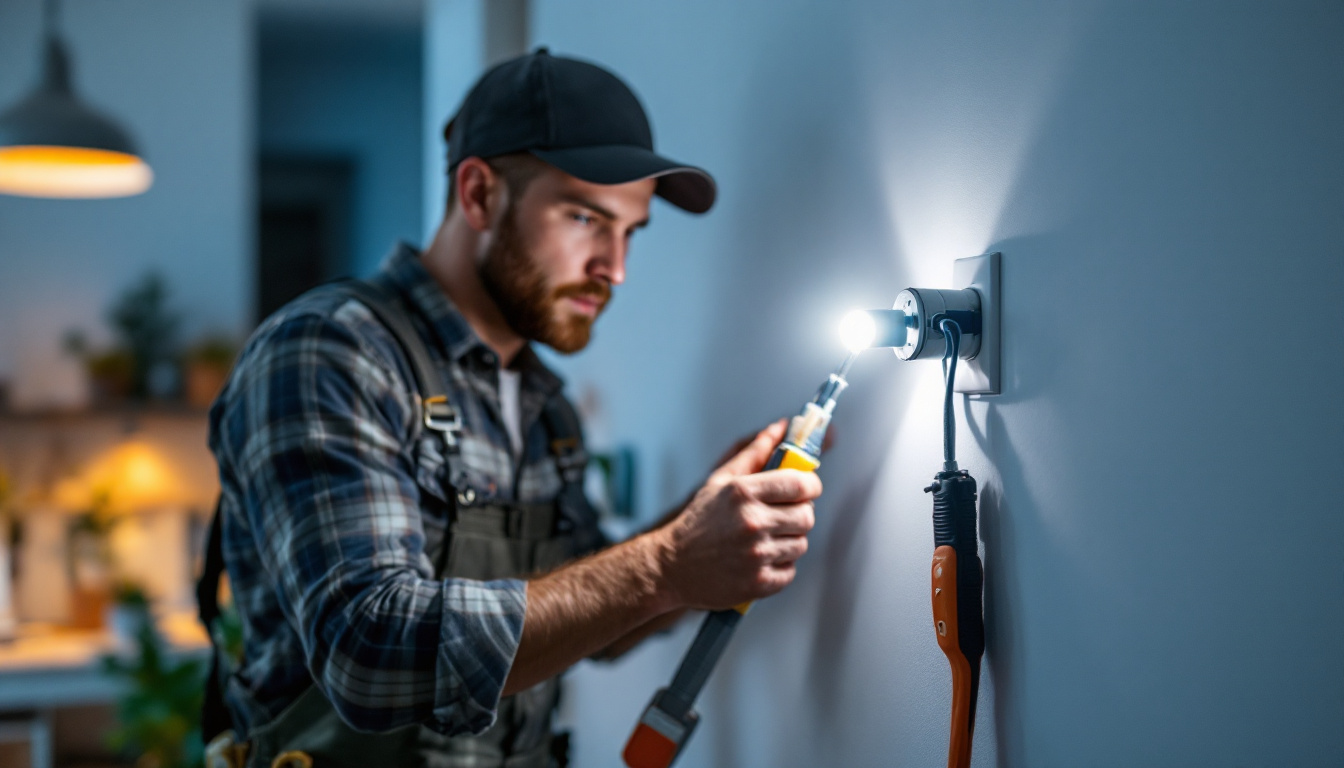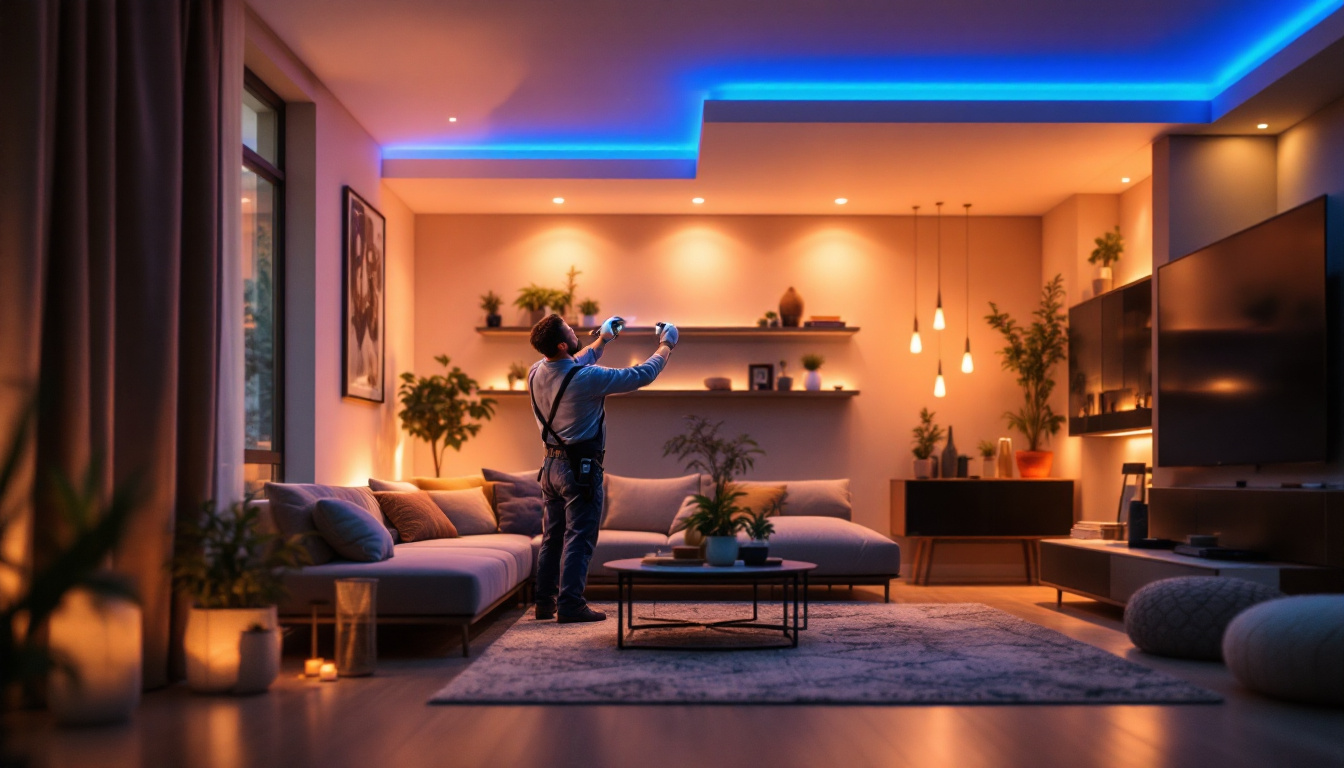
In the world of electrical installations, understanding the nuances of wiring light switch outlets is crucial for lighting contractors. A well-executed installation not only enhances the functionality of a space but also ensures safety and compliance with electrical codes. This article provides essential tips and insights for lighting contractors looking to refine their skills in wiring light switch outlets.
Before diving into the intricacies of wiring, it is important to grasp the fundamental components of a light switch outlet. A light switch outlet typically consists of a switch that controls the power to a light fixture, along with the necessary wiring to connect the switch to the electrical circuit.
At its core, a light switch outlet includes several key components:
Understanding these components is essential for ensuring a safe and effective installation. Each part plays a role in the overall functionality and safety of the lighting system. For instance, the switch can come in various forms, such as single-pole, three-way, or dimmer switches, each serving different purposes depending on the lighting needs of the space. The choice of switch can significantly impact both the convenience and aesthetic appeal of the lighting setup.
Compliance with local electrical codes is paramount when wiring light switch outlets. These codes are designed to ensure safety and reliability in electrical installations. Familiarizing oneself with the National Electrical Code (NEC) and any local amendments is essential for every lighting contractor.
Failure to adhere to these regulations can result in safety hazards, legal issues, and costly rework. Therefore, contractors should always stay updated on code changes and best practices. Additionally, understanding the rationale behind these codes can enhance a contractor’s ability to design systems that are not only compliant but also optimized for energy efficiency. For example, many modern codes encourage the use of energy-saving devices, such as LED-compatible dimmers and smart switches, which can significantly reduce electricity consumption while providing enhanced control over lighting environments.
Having the right tools and materials on hand can streamline the installation process and enhance efficiency. Here’s a list of essential items every lighting contractor should consider:
Using quality tools not only makes the job easier but also ensures a higher standard of workmanship. Investing in reliable tools can save time and reduce the risk of errors during installation. Additionally, having a well-organized toolbox can significantly enhance workflow, allowing contractors to quickly locate the necessary tools without wasting precious time. A magnetic tool holder can also be a handy addition, keeping frequently used tools within arm’s reach while working on a project.
In addition to tools, having the right materials is crucial. Here are some key items to stock:
Having these materials readily available can help contractors complete jobs more efficiently and with fewer interruptions. Furthermore, it’s essential to keep an inventory of various types of connectors and fasteners, as these small components often play a critical role in ensuring secure and reliable connections. Additionally, considering energy-efficient options, such as LED fixtures and dimmer switches, can not only enhance the quality of the lighting but also appeal to environmentally conscious clients looking to reduce their energy consumption.
Proper wiring techniques are critical for ensuring both functionality and safety in light switch outlets. Here are some best practices to follow:
Before beginning any wiring project, it is essential to identify the power source. This typically involves determining whether the power comes from the switch or the light fixture. Understanding the flow of electricity in the circuit is fundamental to a successful installation.
In most cases, it is advisable to run power to the switch first, allowing for easier access to the wiring. This method also simplifies troubleshooting should issues arise in the future. Additionally, knowing the layout of your home’s electrical system can help you avoid potential hazards, such as overloading circuits or creating short circuits. Familiarize yourself with your circuit breaker panel and label each circuit for a clearer understanding of which areas of your home are powered by which breakers. This can save time and prevent accidents during the wiring process.
When connecting wires, it is important to follow the color coding of electrical wiring:
Ensuring that these connections are made correctly is vital for the safety and functionality of the light switch outlet. Use wire nuts to secure connections and ensure that no bare wire is exposed. In addition to using wire nuts, consider using electrical tape to wrap connections for added protection against accidental contact. This extra layer of security can be particularly important in areas prone to moisture or where wires may be exposed to movement. Furthermore, always double-check your connections before turning the power back on. A simple mistake can lead to tripped breakers or, in the worst-case scenario, electrical fires, so taking the time to verify your work is crucial.
Even experienced contractors can make mistakes during the installation process. Being aware of common pitfalls can help avoid costly errors:
One of the most critical aspects of wiring is ensuring that all ground connections are properly made. Neglecting to connect the ground wire can lead to dangerous situations, including electrical shocks or fires. Always double-check that the ground wire is securely attached to both the switch and the electrical box. Additionally, using the correct gauge of wire for grounding is essential; a wire that is too thin may not provide adequate protection. Regular inspections of ground connections can also help identify any wear or corrosion that might compromise safety over time.
Another common mistake is overloading circuits by connecting too many fixtures to a single switch. Each circuit has a specific load capacity, and exceeding this limit can cause breakers to trip or, worse, lead to electrical fires. It is essential to calculate the total wattage of all connected fixtures and ensure it does not exceed the circuit’s capacity. Furthermore, understanding the difference between continuous and non-continuous loads is crucial; continuous loads should not exceed 80% of the circuit’s capacity. Implementing a load management strategy can help distribute electrical demands more evenly across multiple circuits, reducing the risk of overload and enhancing overall system reliability.
After installation, thorough testing is essential to ensure everything functions correctly. Here are some key steps to follow:
Before turning on the power, use a voltage tester to confirm that all connections are secure and that there are no shorts or open circuits. This step is crucial for ensuring the safety of the installation.
Once the power is restored, test the switch to ensure it operates correctly. Flip the switch on and off several times to confirm that the light fixture responds as expected. If the light does not turn on, further troubleshooting may be necessary.
Proper maintenance can extend the life of light switch outlets and ensure ongoing safety. Here are some tips for contractors to share with clients:
Encourage clients to conduct regular inspections of their light switch outlets. Look for signs of wear, such as discoloration, flickering lights, or unusual sounds when the switch is operated. Addressing these issues promptly can prevent more significant problems down the line.
Dust and debris can accumulate around switches, potentially causing issues. Recommend that clients periodically clean their switches with a dry cloth to remove any buildup. This simple maintenance task can help keep the switches functioning smoothly.
Wiring light switch outlets is a fundamental skill for lighting contractors that requires attention to detail and adherence to safety standards. By understanding the basics, using the right tools, and following best practices, contractors can ensure successful installations that meet client expectations.
Staying informed about electrical codes, common mistakes, and maintenance tips can further enhance a contractor’s expertise in this area. With these quick tips, lighting contractors can approach each project with confidence and professionalism, ultimately leading to satisfied clients and a successful business.
Ready to elevate your lighting projects with the highest quality materials at the best value? Look no further than LumenWholesale. Our extensive selection of spec-grade lighting products is designed to meet the needs of the most discerning contractors. With unbeatable wholesale prices and the convenience of free shipping on bulk orders, you can trust LumenWholesale to provide you with reliable, high-performance lighting solutions for every installation. Don’t compromise on quality or price—choose LumenWholesale for your next project. Visit us now for Wholesale Lighting at the Best Value.

Discover the ultimate guide for lighting contractors with top resources on tube light fixtures.

Discover essential tips and strategies for lighting contractors to enhance construction site illumination.

Discover expert tips in our Shepherd Hook Lights: Lighting Contractors’ Guide to choosing the right ones.

Discover the comprehensive guide to home LED lights tailored for lighting contractors.